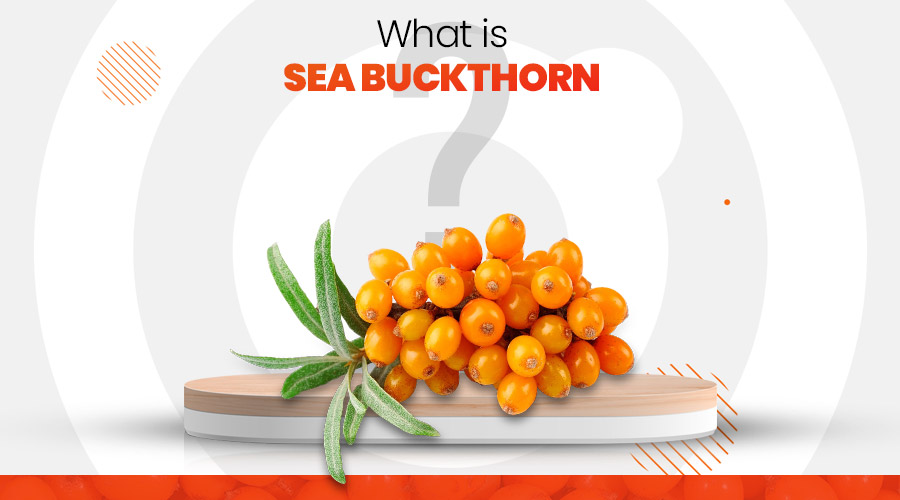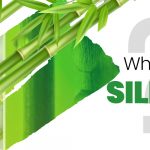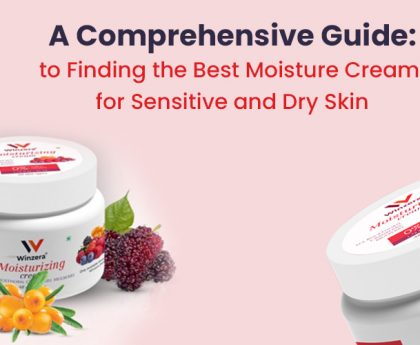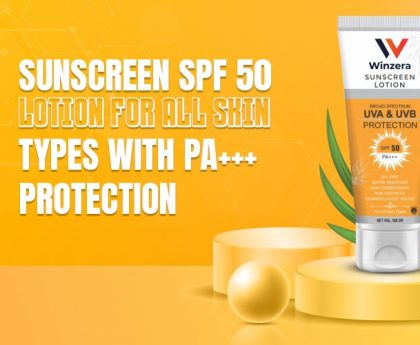In this article we are going to discuss what is Sea Buckthorn and its benefits. There are so many benefits of sea buckthorn The name of Sea Buckthorn sounds like a sea creature or some coral. Sea buckthorn is actually a plant that has been used for centuries for medicinal purposes as well as natural skincare.
Benefits of Sea Buckthorn: Wellness Gold
Sea Buckthorn is a plant which is scientifically named as Hippophae rhamnoides. It is a small shrub that grows at high altitudes in the Northwest of the Himalayan Region. The most common form to use Sea Buckthorn is in its pulp and oil form. It is extracted from the fruit, seeds or berries of the plant. Both, the pulp and the oil, contain vitamins, antioxidants and amazing fatty acids that work wonders for your health and on your skin
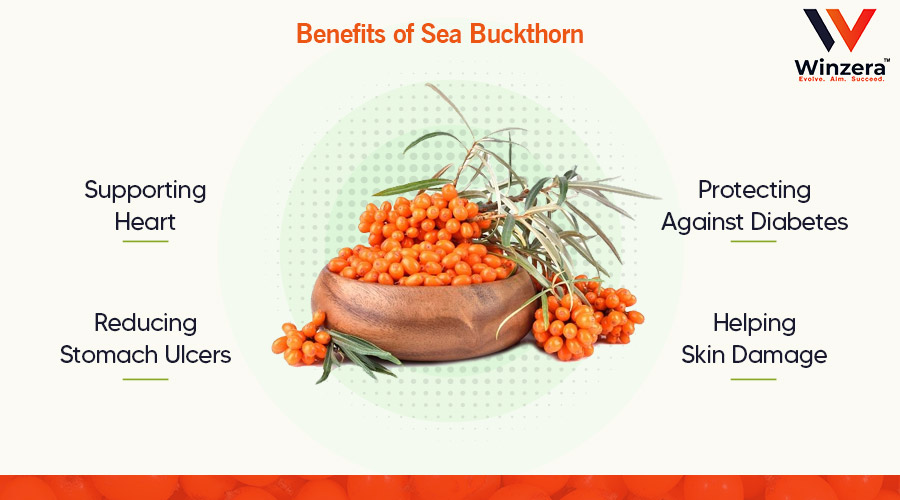
Sea Buckthorn is used for:
It is known as the Holy Fruit of the Himalayas. Sea buckthorn is used as a natural medicine to treat various ailments. This versatile ingredient can be used on skin or even ingested. It provides many health benefits like
- Supporting heart,
- Protecting against diabetes
- Reducing stomach ulcers
- Helping skin damage
Sea Buckthorn pulp juice has a prestigious name in the benefits of skin, hair and health. The berries are used with a combination of leaves and seeds. This remedy is also found in Ayurveda and Ancient Chinese methods of healing. Before learning about the Sea Buckthorn Juice Benefits , let us know about its nutritional content.
It is rich in:
- Essential fatty acids
- Vitamins A, C, E and B
- Beta Carotene
- Citric Acid
- Malic Acid.
Benefits of Sea Buckthorn for skin
There are numerous Sea buckthorn benefits. Some of them are:
- Sea Buckthorn boosts collagen levels in the skin. This helps to reduce inflammation that skin can have due to sun damage and UV exposure. It also heals skin dryness and burns. Frostbite and Bedsores can also be treated with this.
- It boosts the elasticity of the skin and does not let early signs of ageing ruin your young beauty.
- One can also consume Sea Buckthorn Tea which can help to get rid of toxins from the body. This helps to maintain the integrity of the skin
- It also works as a strong hydrating agent if used on dry skin
Advantages of Sea Buckthorn for Hair
- We can find the benefit of Sea Buckthorn as a main ingredient in many shampoos, conditioners and hair supplements. It makes hair healthy and reduces damage.
- To give bounce and curl retention to hair, elasticity is very important. Sea buckthorn restores elasticity.
- Rough and coarse hair can be treated with this ingredient to make them smoother and shinier.
- Stops hair loss and even reduces early signs of grey hair.
These are some of the major benefits for hair if you use it on a regular basis.
Benefits of Sea Buckthorn for Health
There are numerous Sea buckthorn health benefits. Some of them are:
- Boosts Immune System: It contains flavonoids that are responsible to increase resistance from illness naturally in the body.
- Healthy Heart: Problems like blood pressure, blood clots and cholesterol levels can be treated with Sea Buckthorn.
- Protection from Diabetes: If consumed from the mouth, Sea Buckthorn can reduce blood sugar levels.
- Makes the liver healthier: Fatty acids and vitamins do not let cells to damage the liver.
- Improves the Digestive System of the body.
Endorsement Of Seabuckthorn
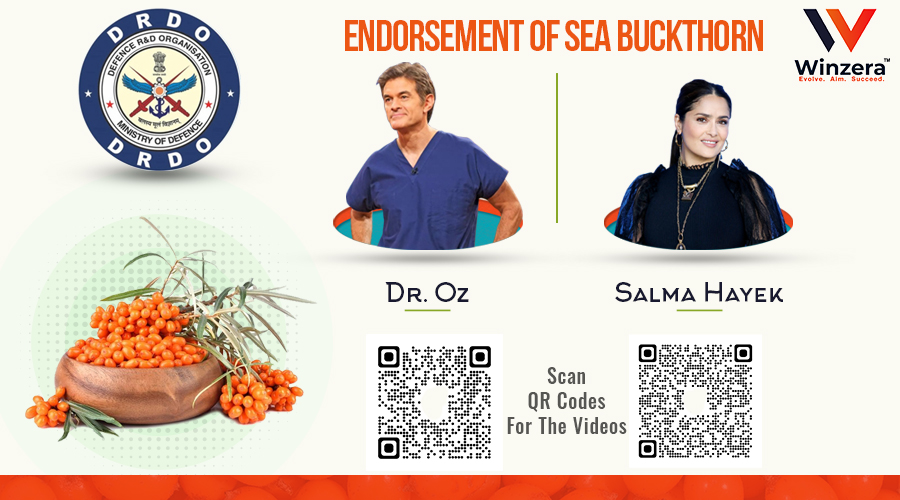
In India, The Defence Research and Development Organization (DRDO) has endorsed and recognizes the immense benifits of Seabuckthorn. It recommends seabuckthorn for solders of the Indian Army especially those serving in high altitudes.
In The West well known personalities such as Dr Oz on “The Dr Oz Show, Oprah Winfrey on “The Oprah Winfrey Show”, Dr Ro the health Guru, Melissa Walsh the celebrity makeup artist and many more have endorsed the beneficial effects of seabuckthorn for health and beauty.
How to use sea buckthorn for Skin, Hair and Health?
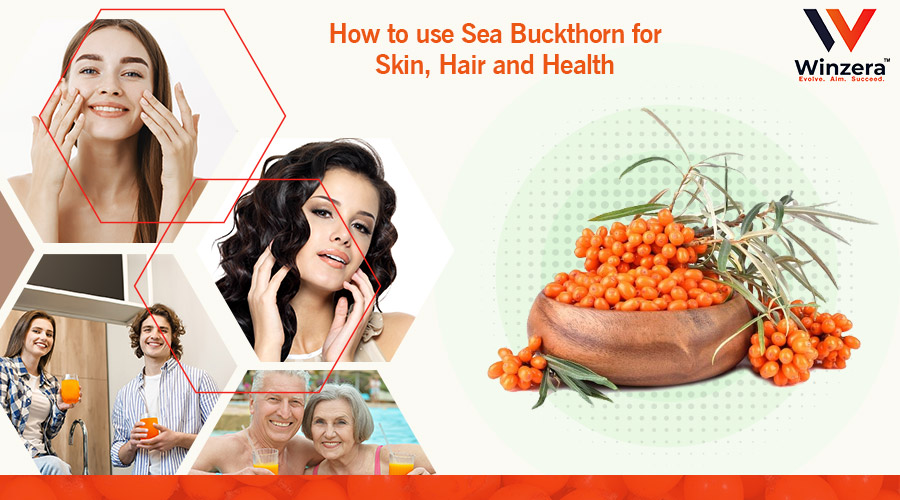
It is not always necessary to consume Sea Buckthorn from the mouth to get the ultimate benefit. There are also many other ways to use sea buckthorn as:
- Sea Buckthorn Oil and capsules
- Sea buckthorn Beverages
- Sea buckthorn in Beauty products.
Are there any side effects of using sea buckthorn for beauty or health?
Generally, Sea Buckthorn has all properties that are safe for skin, hair and health. Sea Buckthorn is full of benefits for humans But, In rare cases, one can notice some rashes, swelling, dizziness etc. if they face allergy issues previously.
Winzera takes pride in providing natural Sea Buckthorn products like:
- SBT Face pack
- Sea Buckthorn Pulp Bathing Bar
- Sea Buckthorn Pulp
- Sea Buckthorn Diabo Win
- Sea Buckthorn Fit Win
- Sea Buckthorn with Turmeric Oil
- Sea Buckthorn Fem Win
Some Clinical Research references on Sea Buckthorn:
- Chronic administration of palmitoleic acid reduces insulin resistance and hepatic lipid accumulation in KK-Ay mice and genetic type 2 diabetes. Yang, et al., Lipids in Health and Disease, 2011, 10:120.
- Beneficial effects of palmitoleic acid (Omega-7) on components of The Metabolic Syndrome, with particular emphasis on improvements in insulin sensitivity. Green, J. Tersus Pharmaceuticals, 2012.
- Identification of a lipokine, a lipid hormone linking adipose tissue to systemic metabolism. Cao, et al., 2008, Cell 134: 933-944.
- Trans-Palmitoleic Acid, Metabolic Risk Factors, and New-Onset Diabetes in U.S. Adults. Mozaffarian, D. et al., Annals Intr Med, 2010, Vol. 153, no. 12.
- Effect of dietary supplementation with sea buckthorn seed and pulp oils on the fatty composition of skin glycerophospholipids of patients with Atopic Dermatitis. Yang, B, et al., 2000, Jour Nutr BioChem, Vol. 11, 338-340.
- Anti-inflammatory activity of sea buckthorn (Hippophae rhamnoides) leaves. Ganju, L et al., 2005, Intr Immunopharm, Vol. 5, 1675-1684.
- Composition and physiological effects of sea buckthorn (Hippophae) lipids. Yang, B, et al., 2002, Trends Food Science Tech, Vol. 13, 160-167.
- Agrawala P. K., Goel H. (2002). Protective effect of RH-3 with special reference to radiation induced micronuclei in mouse bone marrow. Indian J. Exp. Biol. 40, 525–530. [PubMed]
- Bagchi D., Preuss H. G. (2004). Phytopharmaceuticals in Cancer Chemoprevention, 1st Edn. Bocca Raton, FL: CRC Press.
- Bagchi D., Swaroop A., Preuss H., Bagchi M. (2014). Free radical scavenging, antioxidant and cancer chemoprevention by grape seed proanthocyanidin: an overview. Mutat. Res. 768, 69–73. 10.1016/j.mrfmmm.2014.04.004 [PubMed] [Cross Ref]
- Barrett J. C. (1993). Mechanisms of multistep carcinogenesis and carcinogen risk assessment. Environ. Health Perspect. 100, 9–20. 10.1289/ehp.931009 [PMC free article] [PubMed] [Cross Ref]
- Basu M., Prasad R., Jayamurthy P., Pal K., Arumughan C., Sawhney R. C. (2007). Anti-atherogenic effects of seabuckthorn (Hippophaea rhamnoides) seed oil, Phytomedicine 14, 770–777. 10.1016/j.phymed.2007.03.018 [PubMed] [Cross Ref]
- Boivin D., Blanchette M., Barrette S., Moghrabi A., Beliveau R. (2007). Inhibition of cancer cell proliferation and suppression of TNF-induced activation of NFκB by edible berry juice. Anticancer Res. 27, 937–948. [PubMed]
- Cetin A., Kaynar L., Kocyigit I., Hacioglu S., Saraymen R., Ozturk A., et al. . (2008). The effect of grape seed extract on radiation-induced oxidative stress in the rat liver. Turk. J. Gastroenterol. 19, 92–98. [PubMed]
- Chen L., Xin X., Yuan Q., Su D., Liu W. (2014). Phytochemical properties and antioxidant capacities of various colored berries. J. Sci. Food Agric. 94, 180–188. 10.1002/jsfa.6216 [PubMed] [Cross Ref]
- Christaki E. (2012). Hippophae rhamnoides L. (Sea Buckthorn): a potential source of nutraceuticals. Food Pub. Health 2, 69–72. 10.5923/j.fph.20120203.02 [Cross Ref]
- Dulf F. V. (2012). Fatty acids in berry lipids of six sea buckthorn (Hippophae rhamnoides L. subspecies carpatica) cultivars grown in Romania. Chem. Cent. J. 6, 1–12. 10.1186/1752-153X-6-106 [PMC free article] [PubMed] [Cross Ref]
- Duthie S., Jenkinson A., Crozier A., Mullen W., Pirie L., Kyle J., et al. (2006). The effects of cranberry juice consumptions on antioxidant status and biomarkers relating to heart disease and cancer in healthy human volunteers. Eur. J. Nutr. 45, 113–122. 10.1007/s00394-005-0572-9 [PubMed] [Cross Ref]
- Fatima T., Snyder C., Schroeder W., Cram D., Datla R., Wishart D., et al. . (2012). Fatty acid composition of developing sea buckthorn (Hippophae rhamnoides L.) berry and the transcriptome of the mature seed. PLoS ONE 7:e34099. 10.1371/journal.pone.0034099 [PMC free article] [PubMed] [Cross Ref]
- Frohne D. (2010). Leksykon Roślin Leczniczych MedPharm. Wroclaw, 276.
Gao X., Ohlander M., Jeppsson N., Bjork L., Trajkovski V. (2000). Changes in antioxidant effects and their relationship to phytonutrients in fruits of sea buckthorn (Hippophae rhamnoides L.) during maturation, J. Agric. Food Chem. 48, 1485–1490. 10.1021/jf991072g [PubMed] [Cross Ref] - Giampieri F., Alvarez-Suarez J., Gasparrini M., Forbes-Hernandez T., Afrin S., Bompadre S., et al. . (2016). Strawberry consumption alleviates doxorubicin-induced toxicity by suppressing oxidative stress. Food Chem. Toxicol. 94, 128–127. 10.1016/j.fct.2016.06.003 [PubMed] [Cross Ref]
- Goel H. C., Gupta D., Gupta S., Garg A. P., Bala M. (2005). Protection of mitochondrial system by Hippophae rhamnoides L. against radiation-induced oxidative damage in mice. J. Pharm. Pharmacol. 57, 135–143. 10.1211/0022357055218 [PubMed] [Cross Ref]
- Goel H. C., Indraghanti P., Samanta N., Ranaz S. V. (2004). Induction of apoptosis in thymocytes by Hippophae rhamnoides: implications in radioprotection. J. Environ. Pathol. Toxicol. Oncol. 23, 123–137. 10.1615/JEnvPathToxOncol.v23.i2.50 [PubMed] [Cross Ref]
- Goel H. C., Kumar I. P., Samanta N., Rana S. V. (2003a). Induction of DNA-protein cross-links by Hippophae rhamnoides: implications in radioprotection and cytotoxicity. Mol. Cell Biochem. 245, 57–67. 10.1023/A:1022809625826 [PubMed] [Cross Ref]
- Goel H. C., Prasad J., Singh S., Sagar R. K., Kumar I. P., Sinha A. K. (2002). Radioprotection by a herbal preparation of Hippophae rhamnoides, RH-3, against whole body lethal irradiation in mice. Phytomedicine 9, 15–25. 10.1078/0944-7113-00077 [PubMed] [Cross Ref]
- Goel H. C., Salin C., Prakash H. (2003b). Protection of jejunal crypts by RH-3 (a preparation of Hippophae rhamnoides) against lethal whole body gamma irradiation. Phytother Res. 17, 222–226. 10.1002/ptr.1109 [PubMed] [Cross Ref]
- Gradt I., Kuhn S., Morsel J., Zvaigzne G. (2017). Chemical composition of sea buckthorn leaves, branches and bark. Proc. Natl. Acad. Sci. U.S.A. 3, 211–216. 10.1515/prolas-2017-0035 [Cross Ref]
- Grey C., Widen C., Adlercreutz P., Rumpunen K., Duan R. (2010). Antiproliferative effects of sea buckthorn (Hippophae rhamnoides L.) extracts on human colon and liver cancer cell lines. Food Chem. 120, 1004–1010. 10.1016/j.foodchem.2009.11.039 [Cross Ref]
- Guo R., Guo X., Li T., Fu X., Liu R. (2017). Comparative assessment of phytochemical profiles, antioxidant and antiproliferative activities of Sea buckthorn (Hippophae rhamnoides L.). Food Chem. 221, 997–1003. 10.1016/j.foodchem.2016.11.063 [PubMed] [Cross Ref]
- Hu S. (2005). Hippophae rhamnoides L. – Sea buckthorn, shaji, in Food Plants of China (The Chinese University Press: ), 572.
- Kim S., Hwang E., Yi S., Song K., Lee H., Heo T., et al. . (2017). Sea buckthorn leaf extracts inhibits glioma cell growth by reducing reactive oxygen species and promoting apoptosis. Appl. Biochem. Biotechnol. 182, 1663–1674. 10.1007/s12010-017-2425-4 [PubMed] [Cross Ref]
- Ko J. H., Sethi G., Um J. Y., Shanmugam M. K., Arfuso F., Kumar A., et al. . (2017). The role of resveratrol in cancer therapy. J. Mol. Sci. 18:2589. 10.3390/ijms18122589 [PMC free article] [PubMed] [Cross Ref]
- Kristo A., Klimis-Zacas D., Sikaliidis A. (2016). Protective role of dietary berries in cancer, Antioxidants 5:37. 10.3390/antiox5040037 [PMC free article] [PubMed] [Cross Ref]
- Kumar I. P., Namita S., Goel H. C. (2002). Modulation of chromatin organization by RH-3, a preparation of Hippophae rhamnoides, a possible role in radioprotection. Mol. Cell. Biochem. 238, 1–9. 10.1023/A:1019905211392 [PubMed] [Cross Ref]
- Kumar R., Kumar G. P., Chaurasia O. P., Singh S. (2011). Phytochemical and pharmacological profile of seabuckthorn oil: a review. Res. J. Med. Plant 5, 491–499. 10.3923/rjmp.2011.491.499 [Cross Ref]
- Li C. H., Yang X., Chen C. H., Cai S., Hu J. (2014). Isorhamnetin suppresses colon cancer cell growth through the PI3K-Akt-mTOR pathway. Mol. Med. Rep. 9, 935–940. 10.3892/mmr.2014.1886 [PubMed] [Cross Ref]
- Li Q., Ren F., Yang C., Zhou L., Liu Y., Xiao J., et al. . (2015). Anti-proliferation effects of isorhamnetin on lung cancer cells in vitro and in vivo. Asian Pac. J. Cancer Prev. 16, 3035–3042. 10.7314/APJCP.2015.16.7.3035 [PubMed] [Cross Ref]
- Li Y., Hu C. (2015). Hippophae rhamnoides L. (Shaji, Common Sea-buckthorn), in Dietary Chinese Herbs: Chemistry, Pharmacology and Clinical Evidence, eds Liu Y., Wang Z., Zhang J., editors. (Vienna: Springer Science and Business Media; ), 411.
- Malinowska P., Olas B. (2016). Sea buckthorn – valuable plant for health. Kosmos 2, 285–292. 10.1186/s12944-017-0469-7 [Cross Ref]
- McDougall G., Ross H., Ikeji M., Stewart D. (2008). Berry extracts exert different antiproliferative effects against cervical and colon cancer cells grown in vitro. J. Agric. Food Chem. 56, 3016–3023. 10.1021/jf073469n [PubMed] [Cross Ref]
- Nersesyan A., Muradyan R. (2004). Sea-buckthorn juice protects mice against genotoxic action of cisplastin. Exp. Oncol. 26, 153–155. [PubMed]
- Olas B. (2016). Sea buckthorn as a source of important bioactive compounds in cardiovascular diseases. Food Chem. Toxicol. 97, 199–204. 10.1016/j.fct.2016.09.008 [PubMed] [Cross Ref]
- Olas B. (2018). The composition and beneficial health aspects of sea buckthorn (Hippophae rhamnoides L.) oil. J. Ethnopharm. 213, 183–190. 10.1016/j.jep.2017.11.022 [PubMed] [Cross Ref]
- Olsson M., Gustavsson K., Andersson S., Nilsson A., Duan R. (2004). Inhibition of cancer cell proliferation in vitro by fruit and berry extracts and correlations with antioxidant levels. J. Agric. Food Chem. 52, 7264–7271. 10.1021/jf030479p [PubMed] [Cross Ref]
- Padmavathi B., Upreti M., Singh V., Rao A. R., Singh R. P., Rath P. C. (2005). Chemoprevention by Hippophae rhamnoides: effects on tumorigenesis, phase II and antioxidant enzymes, and IRF-1 transcription factor. Nutr. Cancer 51, 59–67. 10.1207/s15327914nc5101_9 [PubMed] [Cross Ref]
- Prakash H., Bala M., Ali A., Goel H. C. (2005). Modification of gamma radiation induced response of peritoneal macrophages and splenocytes by Hippophae rhamnoides (RH-3) in mice. J. Pharm. Pharmacol. 57, 1065–1072. 10.1211/0022357056668 [PubMed] [Cross Ref]
- Sajfratova M., Lickova I., Wimmerova M., Sovova H., Wimmer Z. (2010). β-Sitosterol: supercritical carbon dioxide extraction from sea buckthorn (Hippophae rhamnoides L.) seeds. Int. J. Mol. Sci. 11, 1842–1850. 10.3390/ijms11041842 [PMC free article] [PubMed] [Cross Ref]
- Sarwa A. (2001). Wielki Leksykon Roślin Leczniczych. Warszawa: Książka i Wiedza.
- Seeram N. (2008). Berry fruits: compositional elements, biochemical activities, and the impact of their intake on human health, performance, and disease. J. Agric. Food Chem. 56, 627–629. 10.1021/jf071988k [PubMed] [Cross Ref]
- Shanmugam M., Rane G., Mathi K. M., Arfuso F., Chinnathambi A., Zayed M. E., et al. . (2015). The multifaceted role of curcumin in cancer prevention and treatment. Molecules 20, 2728–2769. 10.3390/molecules20022728 [PubMed] [Cross Ref]
- Sun B., Zhang P., Qu W., Zhang X., Zhuang X., Yang H. (2003). Study on effect of flavonoids from oil-removed seeds of Hippophae rhamnoides on inducing apoptosis of human hepatoma cell. Zhong Yao Cai 26, 875–877. [PubMed]
- Suryakumar G., Gupta A. (2011). Medicinal and therapeutic potential of Sea buckthorn (Hippophae rhamnoides L.). J. Ethnopharmacol. 138, 268–278. 10.1016/j.jep.2011.09.024 [PubMed] [Cross Ref]
- Teleszko M., Wojdylo A., Rudzinska M., Oszmianski J., Golis T. (2015). Analysis of lipophilic and hydrophilic bioactive compounds content in sea buckthorn (Hippophae rhamnoids L.) berries. J. Agric. Food Chem. 63, 4120–4129. 10.1021/acs.jafc.5b00564 [PubMed] [Cross Ref]
- Teng B., Lu Y., Wang Z., Tao X., Wei D. (2006). In vitro anti-tumor activity of isorhamnetin isolated from Hippophaer rhamnoides L. against BEL-7402 cells. Pharm. Res. 54, 186–194. 10.1016/j.phrs.2006.04.007 [PubMed] [Cross Ref]
- The State of Pharmacopoeia Commission of PR China (1977). Pharmacopeia of the People’s Republic of China 1997, Beijing.
- Ulanowska K., Skalski B., Olas B. (in press). Sea-buckthorn (Hippophae rhamnoides L.) as a source of compounds with antitumor radioprotective activity. Postepy Hig. Med. Dosw.
- Upadhyay N. K., Kumar R., Mandotra S. K., Meena R. M., Siddiqu M. S., Sawhney R. C., et al. (2009). Safety and wound healing efficacy of sea buckthorn (Hippophae rhamnoides L.) seed oil in experimental rats. Food Chem. Toxicol. 47, 1146–1153. 10.1016/j.fct.2009.02.002 [PubMed] [Cross Ref]
- Wang H., Gao T., Du Y., Yang H., Wei L., Bi H., et al. . (2015). Anticancer and immunostimulating activities of a novel homogalacturonan from Hippophae rhamnoides L. berry. Carbohydr. Polym. 131, 288–296. 10.1016/j.carbpol.2015.06.021 [PubMed] [Cross Ref]
- Wang H., Ge H., Zhi J. (1989). The components of unsaponifiable matters in sea buckthorn fruit and seed oil, in Proceedings first International Symposium on Sea Buckthorn (Xi’an: ), 81–90.
- Wang Y., Nie F., Ouyang J., Wang X. (2014). Inhibitory effects of sea buckthorn procyanidins on fatty acid synthase and MDA-MB-231 cells. Tumor Biol. 35, 9563–9569. 10.1007/s13277-014-2233-1 [PubMed] [Cross Ref]
- Wu A., Su Y., Li J., Liu Q., Lu J., Wei X., et al. (1989). The treatment of chronic cervicitis with Hippophae oil and its suppository (129 cases analysis), in Proceedings first International Symposium on Sea Buckthorn, 404–406.
- Xu Y. J., Kaur M., Dhillon R. S., Tappia P. S., Dhalla N. S. (2011). Sea buckthorn for the prevention of cardiovascular diseases. J. Funct. Foods 3, 2–12. 10.1016/j.jff.2011.01.001 [Cross Ref]
- Yang B., Kallio H. (2002). Composition and physiological effects of sea buckthorn (Hippophae) lipids. Trends Food Sci. Technol. 13, 160–167. 10.1016/S0924-2244(02)00136-X [Cross Ref]
- Yasukawa K., Kitanaka S., Kawata K., Goto K. (2009). Anti-tumor promoters phenolics and triterpenoid from Hippophae rhamnoides. Fitoterapia 80, 164–167. 10.1016/j.fitote.2009.01.006 [PubMed] [Cross Ref]
- Zafra-Stone S., Yasmin T., Bagchi M., Chatterjee A., Vinson J., Bagchi D. (2007). Berry anthocyanins as novel antioxidants in human health and disease prevention. Mol. Nutr. Food. Res. 51, 675–683. 10.1002/mnfr.200700002 [PubMed] [Cross Ref]
- Zeb A. (2006). Anticarcinogenic potential of lipids from hippophae – evidence from the recent literature. Asian Pac. J. Cancer Prev. 7, 32–34. [PubMed]
- Zhamanbaeva G., Murzakhmetova M., Tuleukhanov S., Danilenko M. (2014). Antitumor activity of ethanol extract from Hippophae rhamnoides L. leaves towards human acute myeloid leukemia cells in vitro. Bull. Exp. Biol. Med. 158, 221–224. 10.1007/s10517-014-2734-3 [PubMed] [Cross Ref]
- Zhamanbayeva G., Aralbayeva A., Murzakhmetova M., Tuleukhanov S.,Danilenko M. (2016). Cooperative antiproliferative and differentiation-enhancing activity of medicinal plant extracts in acute myeloid leukemia cells. Biomed. Pharmacother. 82, 80–89. 10.1016/j.biopha.2016.04.062 [PubMed] [Cross Ref]
- Zhang P. (1989). Anti-cancer activities of sea buckthorn juice and seed oil and its effects on the weight of immune organs Seabuckthorn 2, 31–34.
- Zhang P., Mao Y. C., Sun B., Qian M., Qu W. J. (2005). Changes in apoptosis-related genes expression profile in human breast carcinoma cell line Bcap-37 induced by flavonoids from seed residues of Hippophae rhamnoides. L. Ai Zheng 24, 454–460. [PubMed]

